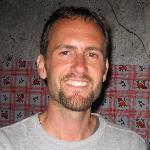 Morgan Ruelle Apr 30, 2015 07:39 |
Hi TedW,
Thanks for submitting an exciting proposal! I loved the video, and the clarity of your step-by-step approach. I really appreciate that you are starting with schools, and that children would be involved in biometeorological data collection. It's not entirely clear whether schools and farmers would also be collecting plant or animal phenological data, which I think would be great so that they can observe (and perhaps develop testable hypotheses) about those relationships. Another thought is that in addition to using weather to predict phenology, phenology can be used to detect/anticipate weather. For example, where I work in the Dakotas, an elder told me that she uses prairie roses as a seasonal cue to plant her garden, because they won't bloom until the last spring frost has passed. The algorithm a prairie rose might use to determine if the risk of spring frost has passed is a mystery, but it's nonetheless a useful cue for human activity. I'm sure you've read about and thought of these kinds of information, but I think it would be interesting to incorporate local knowledge of seasonal cues into your proposal. I would also love to see more specifics as to how you will eventually link your data back to calendars of the human body, given their efficacy in the past and their lasting cultural relevance.
Thanks again and I look forward to discussing this further in coming days!
Morgan
|
 Morgan Ruelle May 1, 2015 08:44 |
15 days left to ensure all content on your proposal is as detailed and accurate as possible! Share your proposal on Facebook, Twitter, LinkedIn or send an email to colleagues asking for comments on your ideas!
|
 Ted Wong May 1, 2015 09:14 | Proposal contributor
Morgan,
Thanks for your comment! I can tell you really read and thought through our proposal, and I appreciate it.
Thanks also for telling me about the prairie rose. I love hearing about that kind of thing, and I'm not surprised: there are lots of great examples of plants with complex, highly adaptive phenological triggers. I do agree that we would want to test for associations that allow phenology to predict the weather. I think these associations would be useful and interesting in the short term--but in the longer term, as climate change shifts different biometeorological variables in different directions and at different rates, we wouldn't be able to count on phenology still accurately predicting the weather. Take that prairie rose as an example. Let's call the nighttime temperature (which drives the date of that last spring frost) the selective variable (because it's the variable through which natural selection has historically acted on the plant). And whatever mysterious combination of environmental cues that trigger blooming--let's call those the perceived variables. Climate change will almost certainly affect the perceived variables differently from the selective variable. For example, if prairie roses bloom in response to a particular daylength--then as the Dakota spring warms, prairie roses will be blooming later and later relative to the last spring frosts. If that elder relies on prairie rose to time her planting, she might be planting too late and missing out on the early part of the growing season. (In her garden, that might not be a big deal. In agriculture, it might mean suboptimal yields, and difficult-to-foresee pest or pollinator consequences.)
The other problem with using phenology to predict the weather is that regional climate models don't predict phenology. Our project uses climate forecasts, which are based on those general circulation models that model air movement, moisture, heat, etc. There's no such thing as a phenology forecast that predicts phenology from physical first principles. Since the forecasts output climate predictions, we have to use weather to predict phenology and not the other way around.
As for who would be collecting the data, I do think that we want to recruit not only schoolchildren, but also farmers and other interested people. The farmers are especially important, as their data-collection locations would be exactly where the predictions are needed. We'll try to clarify this in the proposal text. (Our summary is currently two whole characters short of the max.)
We'll also try to clarify the connection between the phenological forecasts and the calendars of the human body. Our idea has been to treat farmers' perceptions of body time as being similar to phenological observations--so that when we use climate forecasts to generate phenological forecasts, we could also generate forecasts in terms of the body.
Ted
|
 Cynthia Caron May 3, 2015 09:54 | Proposal contributor
Yes, Morgan thank you for your comments. The human body - natural environment connections are the trickiest for us or at least for me. I think the disorientation that climate change creates and will continue to create with respect to how people are able to 'read signals' so to speak whether as part of a human body calendar or otherwise needs to be addressed better.
One thing that I struggle with in this regard is functionalist causality (a direct one to one correspondence between a 'natural' event and a bodily one) and the time that it takes for the body to register those changes. I think we are trying to create a process where body calendars register and adapt to changes, however how much time does this take? If this knowledge was lost over X numbers of years, how many years in general and with unexpected changes in particular do we need before we see the results of this or any other intervention?
I think perhaps we need an inter-generational activity between school children and elders that keeps the knowledge of body calendars alive and passes that knowledge down so that younger generations have a sense of what to expect is something that we are missing at the moment.
Cindy
|
 Morgan Ruelle May 3, 2015 11:39 |
Hi Ted and Cindy,
Thanks for your responses! Ted, you've made great points about seasonal cues and their limitations in the context of climate change. Interestingly, we haven't found many references to non-domesticated plant phenologies in the various calendars of the human body, so they may not have been identified as reliable cues due to inter-annual and micro-climatic variability in the Pamirs.
Cindy, I agree that the inter-generational component is critical. I think it would be wonderful to somehow integrate data collection and inter-generational knowledge exchange. Perhaps children could interview their own grandparents about cues that they use or any other temporal relationships, and then that information could be pooled and discussed with both scientists and communities to identify what kinds of systematic observation by children would be most useful? I personally find that a lot of citizen science approaches rely heavily on scientists to analyze data, and local people are thereby treated as reliable observers, but not experts in any broader sense. I would love to see existing local ecological knowledge play a more fundamental role.
I am also not clear on the relationship between bodily processes and ecological events. There are a few references to analogies between bodily functions and seasonal events, such as avalanches when the sun is in the stomach (think about growling sounds, also a period of hunger at that time). But otherwise, the role of body seasonality (for lack of a better term) is not well investigated. In another way, I think the periods of counting on the body are important because they facilitate observation of synchronies that are separated in time. Once counting is initiated by the hisobdon (based on his/her analyses of meteorological and ecological phenomena), it proceeds at regular intervals, so it offers a new set of reference points that shift in relation to the solar year. This has allowed calendar users to evaluate the consistency of temporal relationships between meteorological and ecological phenomena, and to synchronize human activity with weather despite what we see as inter-annual variability (because we constantly refer back to the solar calendar). For example, maybe the emergence of a certain insect is consistently 15 days later (five body parts) than the last spring frost, and also the optimal time for planting a certain crop.
I think the consistency and diversity among the various calendars of the human body that have been documented are evidence that there has always been a tension between their long- and short-term reliability, as well as their applicability in different environments as these knowledge systems moved through different valleys. So I think it is important for villagers to help identify those core elements of the calendars that are retained across the region and over the long-term, and those that are more flexible and adaptive.
Have you seen the paper by Ahas et al 2000 for the phenological calendar of Estonia? It might be interesting/useful: http://link.springer.com/article/10.1007/s004840000069
Best,
Morgan
|
 Ted Wong May 4, 2015 09:16 | Proposal contributor
Morgan,
Just to be clear: a body calendar starts when the hisobdon starts it, and then after that its progress is determined solely by counts? There's no adjustment to the counting on the basis of environmental cues once the calendar has been inititated?
Ted
|
 Morgan Ruelle May 4, 2015 03:55 |
Hi Ted,
This is our sense from documentation by Russian ethnographers and some older manuscripts. There are two periods of counting on the body (one moving up, associated with the spring/planting times; one moving down, associated with the autumn/harvest times); between these two periods are the summer and winter chillas, which seem to be of variable duration. Its at the end of each chilla that the hisobdon decides when to start counting on the body again. There's a diagram in our paper (Ecology of Time, Kassam et al 2011).
Hope that helps,
Morgan
|
 Ted Wong May 5, 2015 10:26 | Proposal contributor
Thanks!
|
 Morgan Ruelle May 13, 2015 06:33 |
3 days left until the judges will read through your proposal! Take this chance to invite others to weigh-in and ensure your proposal is as comprehensive and accurate as possible! Now is the time to make any last minute changes!
|
 Ferdouz Cochran May 14, 2015 01:15 |
Hi Cindy and Ted,
I became aware of this Climate CoLab call only a couple days ago, and I like what you have proposed. Since I do not have time to put together a proposal, I wanted to share with you a paper that I recently published, Indigenous Ecological Calendars Define Scales for Climate Change and Sustainability Assessments (http://link.springer.com/article/10.1007%2Fs11625-015-0303-y), which may be informative for some of your future endeavors.
Best,
Ferdouz Cochran
|
 Ted Wong May 14, 2015 01:39 | Proposal contributor
Ferdouz,
Wow, thank you! The paper looks fascinating. I'm traveling right now and can't get more than the abstract, but I'm excited to read it in a few days when I have better library access.
Ted
|
 Cynthia Caron May 15, 2015 06:11 | Proposal contributor
Dear Ferdouz, Yes, thank you. I just ordered this article through Interlibrary Loan, and will place this on my syllabus for the Fall. I am teaching a new graduate level seminar on "environment, culture and development'. After working on and thinking about this proposal, I intend to spend an entire class on concepts of time, place and ways of knowing.
Many of my students work in Latin America with a focus on buen vivir, cosmovision, and sustainable land management. Thank you very much for sharing and lending your expertise to make this a better proposal.
Warm regards,
Cindy
|
 Chad Knutsen Jul 10, 2015 04:52 |
Brilliant mates! Truly, we can utilize the wisdoms of the past, and the technologies of today to create the solutions for our future!
If you have a minute, I'd love to hear your thoughts on my 3D Printed Hempcrete House proposal in the Buildings contest.
http://tinyurl.com/hempstone
Thank you, and cheers,
Chad K.
|
 Natasha Udu-gama Jul 28, 2015 04:25 |
Hi Ted,
Just to let you know, proposals are blocked for any edits until the end of the voting period (August 3 - September 12).
Apologies for the delay in my reply, I've been out of the country for some time.
Thanks,
Natasha
|
